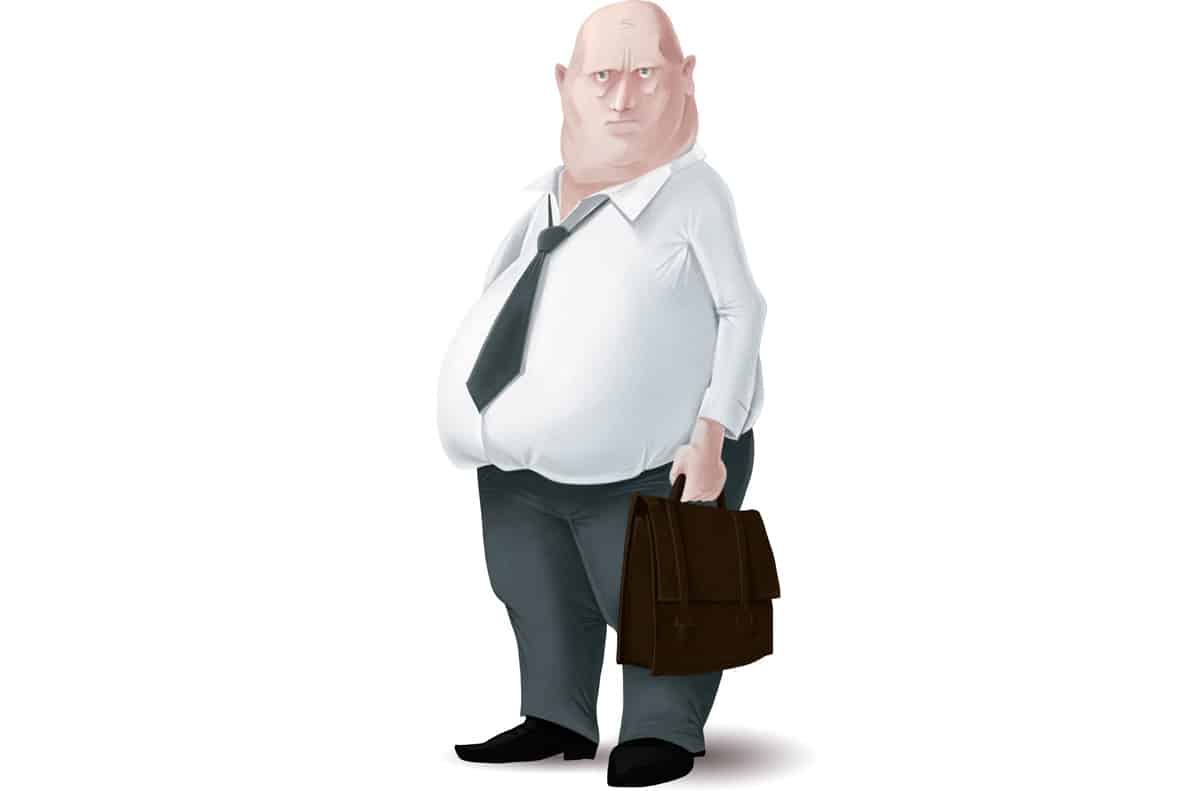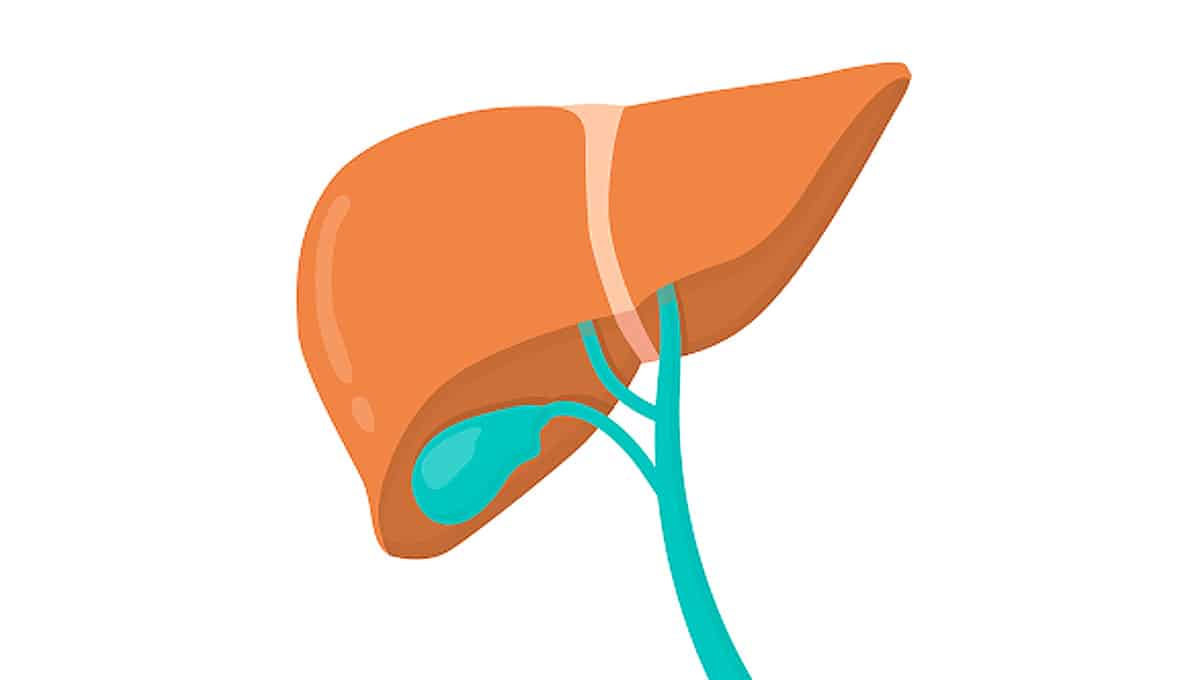In 2015, a paper published in the Annals of Internal Medicine found a paradox: in people with a lot of fat around their organs (visceral fat), people with a normal BMI were much more likely to die of heart disease than obese people. Everyone agrees that visceral fat is bad news, but why would it be so much deadlier in thin people?
To answer that, let’s back up a little. There are two major types of fat in the human body:
- Subcutaneous fat is just under your skin. If it jiggles, it’s subcutaneous fat.
- Visceral fat is deposited around your organs.

Visceral fat is the real bad guy here. Almost all of the “dangers of obesity” (diabetes, heart disease, cancer, early death…) are really dangers of visceral fat – which is important to know because we usually assume that obesity is visually obvious, but visceral fat isn’t always visible from the outside. It’s common for people to look thin and have a normal BMI but have high visceral fat (with all the accompanying health problems). But that’s a different issue and you can read all about it here . The point of this article is that subcutaneous fat might actually be protective against the dangerous of visceral fat.
In other words, the fat you see when you look at a person with obesity might actually be protecting that person’s health. That would explain the otherwise contradictory finding that people with lots of visceral fat do better if they’re obese: the obese people have protective subcutaneous fat on their side to reduce the damage. Of course, it would be better to not have a lot of visceral fat in the first place, but if do have lots of visceral fat, you want subcutaneous fat along with it.
Just to stave off criticism from the start, this isn’t necessarily an argument against weight loss. But it is an argument for strategic weight loss. Specifically, it's an argument for targeting visceral fat - not only because it's a health risk, but also because it actually encourages the growth of subcutaneous fat (which is the visible fat most people ultimately want to lose to look better naked). It's all about working smarter, not harder, and an approach based more around hormone health than calorie-counting.
But hold that thought for a few paragraphs. Let’s back up and take a look at the studies.
In People with High Visceral Fat, Subcutaneous Fat is Associated with Better Health
We’ll start with the weakest evidence: association. Association doesn’t prove causation, but it can be suggestive and interesting. And the association evidence suggests that subcutaneous fat is protective against the dangers of visceral fat.
Diabetes and Metabolic Problems
Subcutaneous fat is associated with protection against diabetes. This study found that more subcutaneous thigh fat was associated with lower risk of diabetes. This study found that people with diabetes have more visceral fat and less subcutaneous fat than healthy people.
Blood Lipids
Subcutaneous fat is also associated with better blood lipids, especially in people with lots of visceral fat. This study tested around 3,000 men and women. In people with lots of visceral fat, increasing subcutaneous fat was associated with lower triglycerides.
Cardiovascular Disease
Subcutaneous fat is also associated with better cardiovascular fat. In this study, researchers looked at 122 patients who had asymptomatic heart disease. They measured their amount of subcutaneous fat, visceral fat, and calcium deposits in their arteries (a measure of heart disease progression). Increasing visceral fat was strongly correlated with aortic calcification – the more visceral fat the patients had, the worse shape their arteries were in. But with subcutaneous fat, it was exactly the opposite: the more subcutaneous fat, the better their arteries were doing. As the researchers put it:
“SFA was significantly and inversely associated with [calcium in the arteries], in an independent fashion. These results suggest that subcutaneous fat accumulation might have a protective role against atherosclerosis in asymptomatic subjects.”
This study studied four groups of patients and measured their cardiovascular health.
- High subcutaneous/high visceral – doing fine
- High subcutaneous/low visceral – doing fine (almost all women)
- Low subcutaneous/high visceral – really in deep trouble (all men)
- Low subcutaneous/low visceral – doing fine
Again, the subcutaneous fat seemed to be protecting people against the problems caused by visceral fat.
Subcutaneous Fat Protects Health in Diet-Induced Obesity
Another piece of evidence for the protective effect of subcutaneous fat comes from mouse studies. Researchers can’t just take thin people, measure their health, overfeed them until they gain a huge amount of subcutaneous fat, and measure again. But researchers can do that in mice – they do it all the time. And just take a look at the results.
In this study, researchers overfed mice to increase their fat stores. Then for some of the mice, they removed fat their inguinal fat depots (a subcutaneous fat deposit in their lower body). The mice with their subcutaneous fat removed had lower glucose tolerance, higher insulin resistance, and more triglyceride accumulation in their muscles. The researchers suggested that “lower body subcutaneous adipose tissue can function as a "metabolic sink," protecting the mice from diabetes. Remove that fat, and the mice are really in trouble.
This study is also pretty amazing. Mice were fed a junk food diet (basically mouse McDonald’s) and then given a transplant of either visceral fat or subcutaneous fat. A subcutaneous fat transplant prevented them from accumulating triglycerides in their liver and reversed the glucose intolerance caused by their junk-food diet. It also reduced levels of inflammatory cytokines. Basically, the subcutaneous fat made them much healthier. On the other hand, the poor mice who got the visceral fat did worse on all those measures.
Here’s a repeat but in rats. These researchers actually tested both a high-fat and a high-carb diet for making the poor rats obese, and the subcutaneous fat transplant worked in both cases, protecting the rats from the consequences of their weight gain and horrible diet.
Making People Gain Subcutaneous Fat Doesn’ t Hurt. In Fact, it Might Help.
Some anti-diabetic medications improve insulin sensitivity and also make patients gain subcutaneous fat. For example, two studies (one, two) found that the antidiabetic rosiglitazone improved insulin sensitivity in people with type 2 diabetes. The improvements were associated with fat gain overall, but it was all subcutaneous fat: patients actually lost visceral fat. This doesn't prove that the subcutaneous fat gain caused the improvements in insulin sensitivity, but combined with all the other evidence, it's really striking.
How Does That Work?
Nobody is really sure. But one interesting theory is the “portal theory.” According to this theory, visceral fat causes insulin resistance because it releases more free fatty acids directly to the liver, which ultimately makes the liver insulin resistant. Subcutaneous fat, on the other hand, does the opposite: it stores free fatty acids.

What That Means for Fat Loss
These studies suggest a strategy for fat loss: focusing specifically on visceral fat. If you care at all about improving your health, then visceral fat should be Public Enemy #1 – subcutaneous fat is much less of a health concern, if it's even a concern at all.
Even if you don't care at all about health and just want to be thinner, losing visceral fat probably helps people lose subcutaneous fat, since visceral fat creates a pro-inflammatory environment and totally messes with your appetite hormones (both bad for any kind of fat loss). So getting rid of the visceral fat would make it easier to lose subcutaneous fat. It's all about working with your body instead of trying to swim against the current.
A quick look at some ways to reduce visceral fat:
- Reduce stress and cortisol levels. Cortisol is rocket fuel for visceral fat.
- Reduce sugar. Sugar and cortisol work together to encourage visceral fat growth.
- Take care of anything else that causes insulin resistance (e.g. more carbs than you personally can handle)
- Exercise: exercise helps reduce visceral fat.
More details and references for all of the above are here. Visceral fat growth is a problem of the typical American diet, but it's a perfect illustration of why diet quality matters just as much as diet quantity. Excess calories might be inevitably stored as fat, but it really does matter for your health whether that fat is visceral or subcutaneous, and that's very much a hormonal issue.
The answer to visceral fat is to diet smarter, not harder. That’s why Paleo is all about the hormonal effects of foods on your body and finding diet patterns that maximize metabolic health. All of this is just one more reason to look beyond calorie-counting and find a more strategic, specific plan for targeted fat loss.





Leave a Reply